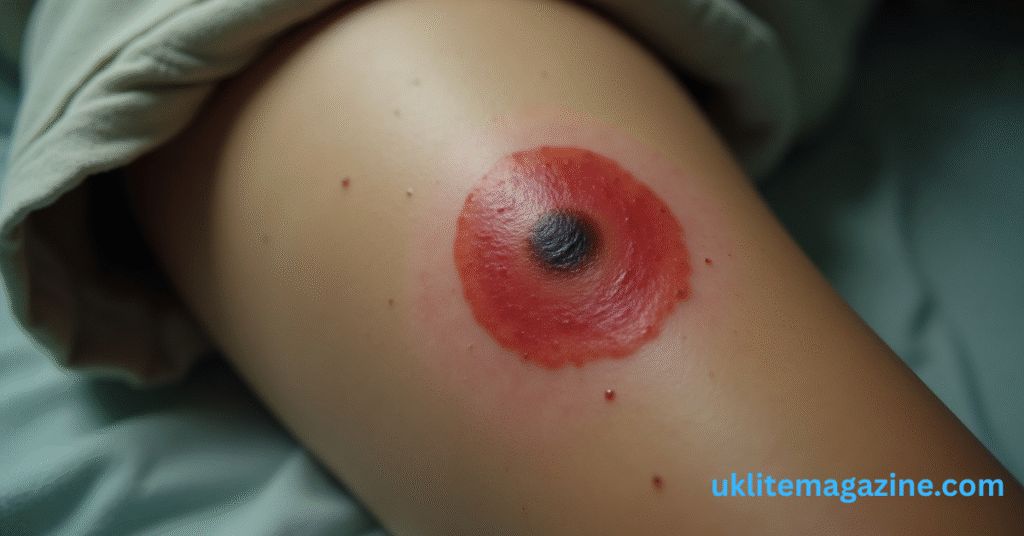As climate patterns shift across the United States, medical experts are seeing a disturbing trend: Lyme disease is no longer just a problem for the Northeast. Warmer states like Texas, Florida, Georgia, and even parts of California are now reporting significant increases in tick-borne infections, particularly Lyme disease.
“This isn’t just a seasonal issue anymore,” says Dr. Karen Mitchell, an infectious disease specialist based in Atlanta. “We’re seeing Lyme disease cases in areas that rarely had them before. The expansion of tick habitats is directly tied to warmer winters and longer summers.”
What Is Lyme Disease?
Lyme disease is a bacterial infection caused by the Borrelia burgdorferi bacterium. It spreads to humans through the bite of an infected black-legged tick, often called a deer tick. These ticks latch onto skin and feed on blood, sometimes for several days—giving the bacteria time to enter the bloodstream.
Why Are Infections Rising in Warmer States?
The main culprit is the changing climate, which has expanded the geographic range of ticks. “Ticks thrive in humid, wooded areas, and with milder winters, they’re surviving longer and moving farther south,” explains Dr. Mitchell.
Another reason for the spike in cases: more outdoor activity. As people hike, camp, and garden—often unaware of the presence of ticks—they become vulnerable to bites and infections.
Symptoms of Lyme Disease
Lyme disease can be tricky to diagnose early on because its symptoms often mimic the flu. However, one of the telltale signs is a bull’s-eye-shaped rash around the tick bite, called erythema migrans.
Other Early Signs May Include:
-
Fever and chills
-
Headache
-
Fatigue
-
Muscle and joint aches
-
Swollen lymph nodes
If left untreated, the infection can spread to joints, the nervous system, and even the heart.
Is Lyme Disease Curable?
Yes—early detection is key. Lyme disease is typically treated with a 2- to 4-week course of antibiotics, such as doxycycline or amoxicillin. Most people recover fully with prompt treatment.
However, in some cases, symptoms can linger for months or even years—a condition known as Post-Treatment Lyme Disease Syndrome (PTLDS).
Preventing Lyme Disease
Here are some expert tips to reduce your risk:
-
Wear long sleeves and pants in grassy or wooded areas
-
Use insect repellents with DEET or permethrin
-
Shower after outdoor activities to wash away any unattached ticks
-
Check your body and clothing for ticks, especially in hidden spots like underarms, scalp, and behind knees
-
Remove ticks properly using tweezers and disinfect the area
Facts About Lyme Disease
| Category | Details |
|---|---|
| Cause | Bacteria (Borrelia burgdorferi) |
| Transmission | Bite from infected black-legged tick |
| Key Symptom | Bull’s-eye rash (erythema migrans) |
| Treatment | Antibiotics (e.g., doxycycline) |
| Common States Affected | Northeast, Midwest, and now Southern U.S. |
| Peak Season | Spring through fall, but expanding yearly |
Conclusion
Lyme disease is no longer confined to wooded trails in New England. It’s creeping into suburban neighborhoods and warmer states at a concerning rate. If you spend time outdoors, awareness and prevention are your best defense.
Don’t ignore symptoms. A small tick bite can lead to big health problems—but only if you let it.
Frequently Asked Questions (FAQs)
Can Lyme disease go away on its own?
No. Without treatment, Lyme disease can cause serious long-term health issues, including joint damage and neurological problems. Early medical attention is essential.
What does Lyme disease do to a person?
It can affect the skin, joints, heart, and nervous system. If untreated, it may lead to arthritis, facial paralysis, memory issues, and fatigue.
Can you cure Lyme disease?
Yes. Most people recover completely with proper antibiotics, especially if caught early. Chronic symptoms can occur if left untreated.
What are at least 5 early signs of Lyme disease?
-
Fever
-
Headache
-
Fatigue
-
Bull’s-eye rash
-
Muscle/joint pain
Can Lyme disease kill you?
It’s rare, but complications like Lyme carditis (heart infection) can be life-threatening. Early treatment greatly reduces the risk.

